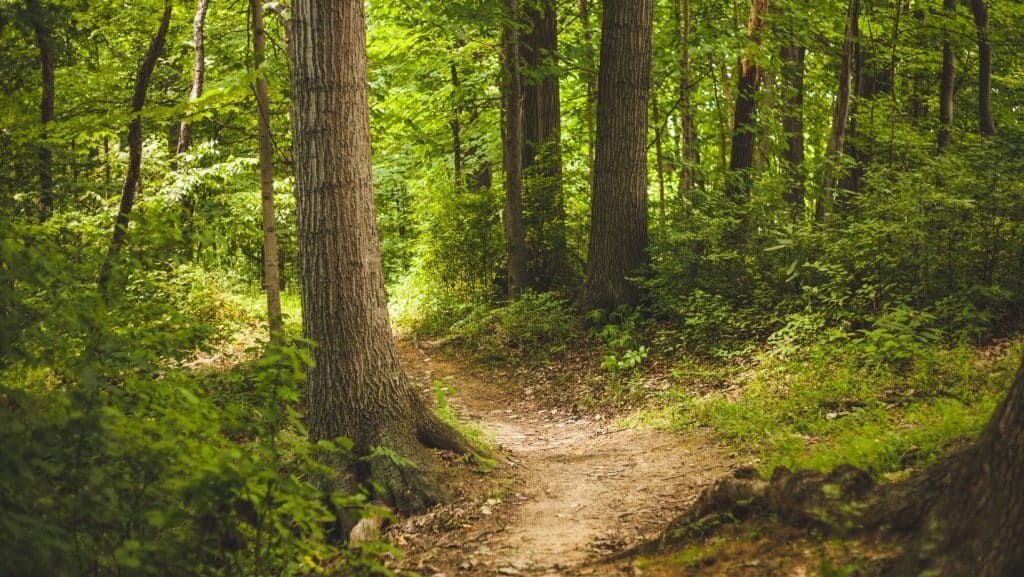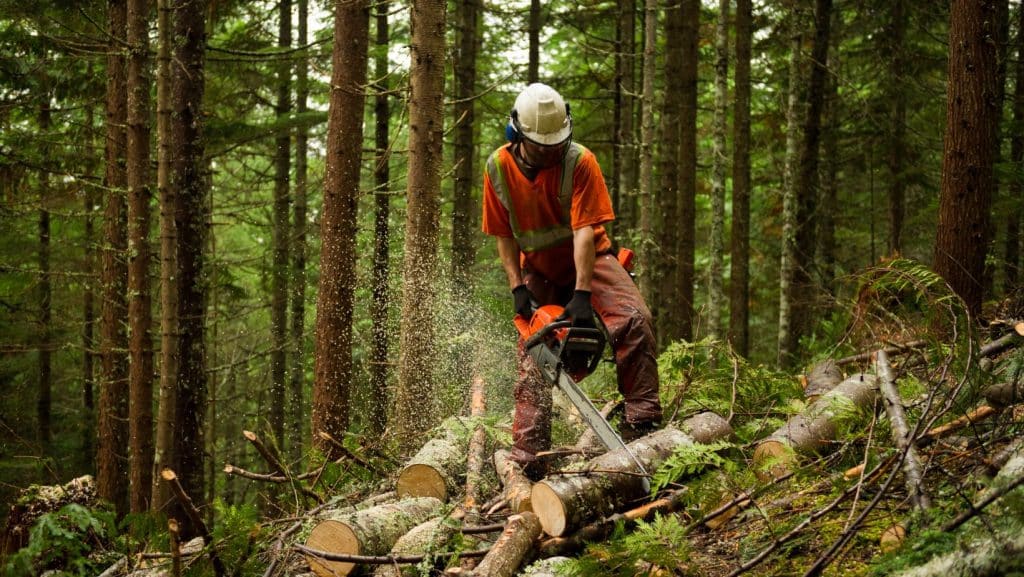What is Forest Thinning?
Forest thinning is a method used to restore landscapes’ beauty and encourage trees to thrive! In short, forest thinning is beneficial and a great way to treat woodland and forest spaces that are overgrown and dense with vegetation. Where there are lots of trees in close proximity, there is competition for water, minerals and light. To improve tree health and therefore, a forest overall, we can use forest thinning to benefit natural spaces in many ways. Read about forest mulching here.
Forest managers put necessary plans in place for forest thinning to go ahead. This ensures the impact it will have is beneficial and as undisruptive as possible to the surrounding wildlife. This method should be done in cycles of years, often decades to ensure the harvesting of wood is economically as well as environmentally rewarding.

How Forests Benefit From Thinning
Reducing Forest Fires
In hot summers, and lightning storms, wildfires can destroy landscapes and habitats in forests and woodland spaces. With forest thinning, the removal of weaker trees, dead or dying branches and shrubs can reduce the spread of fire. We can control wildfires more easily with fewer smaller trees and reduce the spread of fire. As well as forest fire, forest thinning can reduce the spread of disease and insect infections too.
Tree Resilience
By encouraging certain larger trees to thrive, you will have to reduce the competition for water and nutrients. In thick forestry, trees will be fighting for light and the shrubs and wildlife below branches will receive less light. Tree branches can grow wider as well as taller if trees are remove, or branches are deducted. You’ll also be encouraging biodiversity and supporting habitats with forest thinning as long as the job is done mindfully.
Commercial Wood
You can produce higher volumes of commercial wood when removing forest trees responsibly. In the meantime, the years it takes for the trees to grow they’ll be reducing the carbon in the air, stabilising the soils and providing life to certain creatures. For local economies, firewood produced from forest thinning is a resourceful means of heating homes and sourcing wood locally.

Are There Negative Impacts?
If not planned properly and aimed to remain sustainable, then forest thinning can be very destructive and have a negative impact on the quality of the trees in a forest and on the wildlife depending on it for habitats and food. If not managed carefully, forest thinning can also be economically damaging. Good quality and quantities of wood produced through removing trees should be in equation with the time spent growing them, as well as the condition the forest is left in to continue producing wood.
In places in the world where forests are being torn down for wood and human activity, there are consequences for the environment. Forest thinning should prioritise the health of the environment and places like the Nation Trust protect our woodlands from being harmed.
Woodland Management with The Tree Doctors
We have a woodland management service where our team work in commercial spaces to improve the quality of woodland and reduce the negative impacts dense vegetation can cause. The Tree Docs deliver services to domestic and commercial spaces, only removing trees when needed. We love trees and do all we can to look after them.
Contact Us
If you’re looking for reliable tree surgeons to improve the health of woodlands or forest areas, then The tree Doctors would love to hear from you. Read more about our services here.

